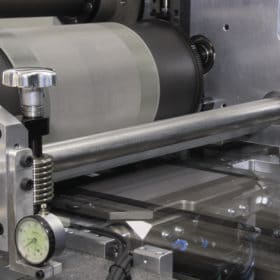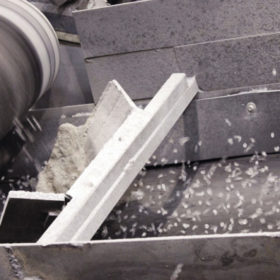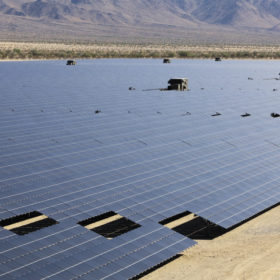Big, and then bigger
Throughout this year, a fast-moving story has played out in PV module technology, with the introduction of larger wafers and subsequently larger module formats seeing the industry break into two camps, backing either 182 mm or 210 mm wafers. It remains to be seen whether one or the other will become a new industry standard, and both sizes will likely be plentiful on the market for the next few years at least. pv magazine takes a look at how we got to this point.
‘I think the market is ready for the next step’
As part of a billion-euro acquisition deal with Germany’s Covestro, DSM will soon move away from the solar glass coatings market. For the materials giant’s Advanced Solar business, this means a renewed focus on the backsheet market. Here it sees growing demand for back-contact technologies and the conductive backsheets that go with them and has recently launched an updated version of its Endurance polymer backsheet. pv magazine recently caught up with Pascal de Sain, VP at DSM Advanced Solar, for an update.
Rotary printing rocks!
Cell metallization is getting a makeover. Some ‘rocking’ research projects spearheaded by Fraunhofer ISE are now set to introduce new printing methods that could deliver more than a doubling of throughput. There are hurdles to overcome across various process steps and on a materials basis, but initial results appear encouraging.
pv magazine test
October 2020 results
A north star for solar merchants
The solar industry is quite diversified in technologies and market approaches at this stage. Of course, each country is unique and has its own challenges, often demanding bespoke solutions. However, a few strategies might be more likely to work, especially where there is already plenty of renewable energy deployed. To navigate the sea of market opportunities, policymakers and stakeholders should look north.
Sustainable PV goes beyond recycling
Despite significant progress on material and energy efficiency in solar PV manufacturing over the last few decades, terawatt-scale manufacturing mandates further innovation and improvement along all parts of the value chain – especially on material circularity and supply chain decarbonization, according to Andreas Wade, global sustainability director at First Solar. Ensuring these objectives are met will be key to adhering to the global carbon budget for 1.5 C.
‘Circular economy is the most pressing challenge’
This year has been extraordinary for businesses. The Covid-19 pandemic has shaken global markets, forcing many companies to rethink their daily operations. Despite these challenging times, it is crucial to keep environmental goals in focus – indeed, it can be argued they are more pertinent than ever. CEO Jürgen Reinert recently spoke to pv magazine about the progress inverter manufacturer SMA, a partner of the UP initiative, has made reducing its carbon footprint and use of toxic substances. It is also focusing on circular economy principles, despite the tough times.
Aware but unprepared
The solar industry cannot claim to be a clean energy source if it leaves a trail of hazardous waste. But, in the absence of a cogent PV recycling policy, the United States risks sending millions of solar modules and tons of toxics to landfill in the coming years. A new initiative by Recycle PV Solar seeks to address this problem.
A unique position
Solar PV could disrupt the fossil fuel industry and help with two of the biggest sustainability challenges of our times: biodiversity loss and food production. In Q1 2021, pv magazine’s UP initiative will shine a spotlight on agrivoltaics – the combination of agriculture and solar energy – in recognition of this emerging market. The goal is to understand the potential benefits, and economic, political and technical challenges of such an innovative partnership.
Disrupting developments
The current developer-EPC model has increasingly turned to focus on quality over a two-year horizon. This contrasts with long-term owners who are focused on quality over the lifetime of their projects (20 to 40 years). With long-term owners now buying projects in the pre-construction phase, the current model looks set for disruption. Olivier Crepon, managing director at Skyray Engineering, reviews the emerging model of project development and explains how it will impact developers, EPCs, and third-party services and ultimately lead to a stronger, more mature PV sector.










